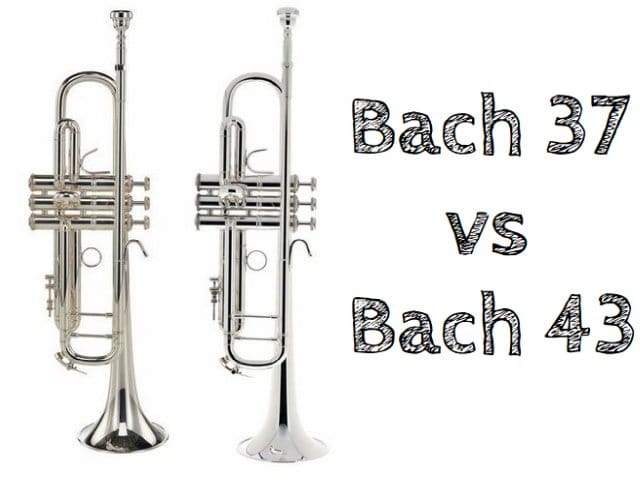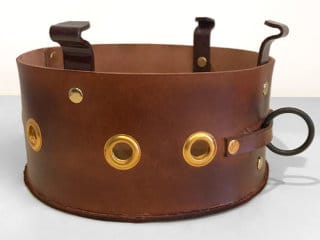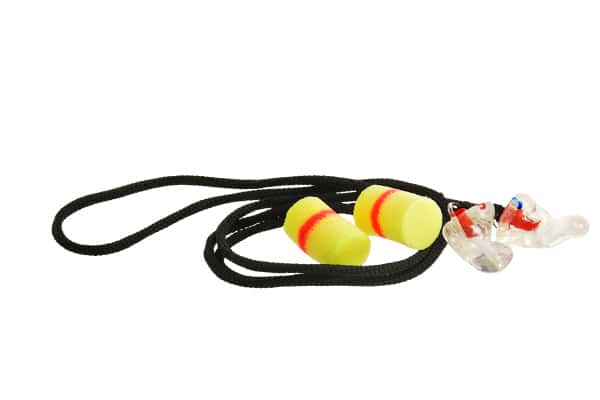When playing the trumpet, you may find yourself wanting to block your ears due to the loud sound, or wishing you could alter the sound a little bit. In comes the trumpet mute, which does just that.
If you’re new to playing the trumpet, you may think trumpet mutes simply silence the instrument, and for some mutes that may be true, but the majority of trumpet mutes are not designed to silence the trumpet, but to adjust the sound.
We will be going over the most common trumpet mutes here and you can learn which is the best trumpet mute for you.
The Five Most Common Trumpet Mutes
From classical to jazz, solo to the band play, here are the five most common Trumpet mutes:
- Harmon Mute
- Cup Mute
- Straight Mute
- Plunger Mute
- Practice Mute
There are also bucket mutes, which we have dedicated a buying guide for bucket mutes to.
Harmon Mute
If you know anything about trumpets, you know of Miles Davis. Miles Davis was an American trumpeter who extensively used a Harmon mute and is considerably a reason it is so popular today.
The Harmon mute is known for its “wah-wah” sound when used, which is where the name wah-wah mute (or wa-wa, or wow-wow) is derived.
What makes a Harmon mute so unique is that they are just so versatile. The mute itself alters the sound, but you can continue to alter the sound by using your hand at the end of the mute to cover and recover the hole. Beyond just the hand placement, changing the stem placement can also give you a different sound.
This is one of the most common mutes due to its ability to make so many different sounds with just one mute!
The Harmon mute is most commonly used in Jazz, concert band, and orchestra. These mutes are better for those who give their trumpet a bit of a beating because it is made of more durable material, typically metal, than other mutes that are often made of cardboard.
Most Trumpet players would benefit from having the Harmon mute because it can make so many different tones, albeit some of them may be strange!
The Best Harmon Mute: All Copper Wow Wow Mute
You can’t really go wrong with a Harmon mute, so which one is best for you depends a bit on the sound you want to achieve. Having said that, we recommend the Harmon all copper Wow Wow mute*. It has good intonation and is pleasant to play.
Cup Mute
The cup mute is another traditional mute that you will hear of often. This mute looks similar to a straight mute but has a cup at the end of it. The cup mute is almost always made out of cardboard and cork which makes it lighter weight on the instrument.
If you do a lot of band arrangements, this may be a good mute for you because it provides a more subdued tone that allows a band to flow together more. This mute gives a darker tone and because of that is often used in Jazz.
There are many different kinds, but two kinds of cup mutes warrant special mention: a mic-a-mute* and a buzz-wow mute. The mic-a-mute creates a thicker, velvety sound and its name was coined because it can be used very close to a microphone.
The buzz-wow mute sort of sounds like a Kazoo and gives a buzzing sound. This mute had an exceptional design, but sadly is not produced anymore. Have a look at this versatile mute right here:
The Best Cup Mute: Denis Wick
One again, the mute you pick depends on the sound you want to create. If you play in an orchestra, it’s best to go with what everyone else is playing so you get an even sound. If you don’t know which mute to get, you can’t go wrong with the Denis Wick cup mute*. It also lets you pop the cup off and play it as a straight mute.
Straight Mute
The classic of all classics is the straight mute. This is the most common mute and has a cone shape. It can come in many different materials, the most common being wood, plastic, or stone-lined cardboard.
The straight mute provides a nasal sound and is used often in long, lyrical solos. It acts like a high pass filter and is the least “frilly” of all the mutes.
A straight mute is often considered the default mute as it is the one to use if the classical music doesn’t specify which one to use. If you need a go-to mute, this is the one to go with and should be a staple in any trumpeter’s collection due to how frequently it is used and requested.
The Best Straight Mute: Tom Crown
The Tom Crown straight mute* is an excellent mute. It’s made from aluminum so it’s very light-weight and you won’t feel the extra weight on your bell. The sound is also very nice and focused.
Plunger Mute
You may be thinking plunger is just a silly name for a different type of mute, but no, this is a plunger. The same plunger you can buy at any hardware store and use on your toilets, but please do not go grab your toilet plunger and use it as a mute!
Having said that, if you do want to save money, actual (unused!) toilet plungers are often used by professional trumpeters and are a serious option. Make sure you get a 6 inch rubber plunger* for that.
If you go that route, remove the wooden stick so that there is a hole in the middle. With the hole in the middle, you use your hand to cover and uncover the whole to make a crying “wah-wah” noise.
A skilled Trumpeter can use a plunger mute to make the trumpet sound like it’s talking.
Fun Fact
The voices of Charlie Brown’s parents were created by using a plunger mute!
When a composition asks for this (yes, they will!) they will use symbols such as “+” to cover the hole, and “o” to uncover it! This is the most affordable but also the most niche mute and would probably only be necessary if you’re playing a wide variety of music and want to be prepared. Otherwise, most just wait until it’s called for since it’s such an accessible tool.
The Best Plunger Mute: Denis Wick
Again, try out which one you like best to find a mute that fits your purpose. If you’re unsure, Denis Wick also make excellent plunger mutes that won’t break the bank like this one*.
Practice Mute
Every new trumpet player has probably heard of a practice mute. The practice mute lives up to its name. This one, unlike the others we discussed today, is used for volume altering vs sound altering. This is a standard mute every trumpeter has and it is used to make the sound so low while practicing it doesn’t disturb others or create a distraction.
Want to practice quietly? Get a practice mute! Learning a new song? Practice mute. In high school band class? Practice mute. Even though it does significantly decrease the volume, it still provides a stable pitch so the player can hear what they are doing and how it sounds. This is a must in any trumpet case.
The Best Practice Mute: Yamaha Silent Brass
The Yamaha Silent Brass lets you not only play quietly to others while you can still hear your sound via headphones or earphones, you can also use it to digitally record yourself. It’s fairly free-blowing and if you’re concerned over low volume rather than a particular tonal quality, we can’t recommend the Yamaha Silent Brass* highly enough. If only to keep the peace int he house while you’re still learning.
Looking for a teacher?
Want to get lessons at the comfort of your own home? Check out the course Learn to Play the Trumpet: Beginner to Pro Made the Easy Way* on Udemy! (See their full trumpet course line-up here*!)
Frequently Asked Questions About Trumpet Mutes
Is a Harmon mute a cup mute?
No, a Harmon mute is not a cup mute. Cup mutes have a cup-shape on the end of the mute. Where cup mutes have openings (often adjustable) to let the air out, Harmon mutes block off the airflow around the mute completely with a cork.
Does a trumpet mute change the pitch?
Trumpet mutes have a tendency to turn the pitch sharp, as putting the mute in the bell reduces the air column of the instrument, thus making the produced tone higher.
Should I practice the trumpet with a practice mute?
Ideally, you’ll practice the trumpet as you want to perform it, which most of the time would be unmuted. However, due to constraints regarding practicing time and place, you may want to practice quietly to not disturb family or neighbors. While practicing unmuted is preferable over playing with a practice mute, playing with a practice mute is very much preferable over not practicing at all.
Final Thoughts
There are many different ways to alter the sound of your traditional trumpet. Whether you’re trying to protect your ears while practicing or you’re aiming for that legendary “wah wah” sound, there is a wide variety of mutes out there to achieve any goal you have.
Mutes are a great addition to your collection and you can have great fun and learning experiences by trying each of these for yourself. Remember, these are just the five most common mutes. There is a plethora of different mutes out there to explore. Try some out for yourself and explore the full range of sounds your instrument can make.
Related Posts
- The Five Best Trumpet Bucket Mutes (Buying Guide)
- The Best Earplugs For Trumpet Players
- The Best Trumpet Cases (An Illustrated Guide)
- 9 Useful Tips Against Stage Fright and Dry Mouth
- Fascinating Trumpeter’s Trivia – Frequent Questions Answered
- Top 3 Trumpet Maintenance Tips
TrumpetHub.com is a participant of the Amazon Services LLC Associates Program, an affiliate advertising program. Links marked with an asterisk (*) are affiliate links. If you buy a product through an affiliate link, we will get a small commission without extra cost to you. This helps us earn an income off the free content we provide to you. Thank you for your support!








